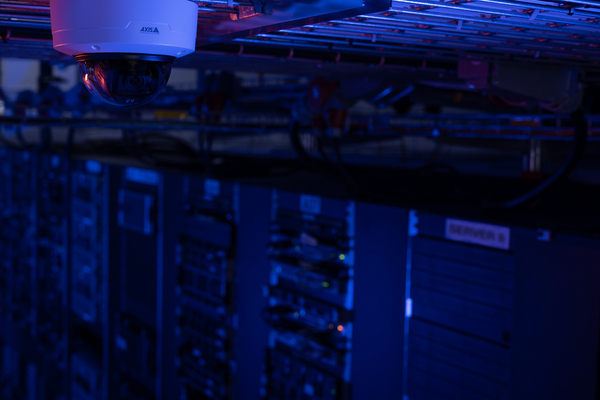Automated GRC: a privacy-first approach
Sponsored by Trūata
The future of governance, risk management and compliance (GRC) strategies will be characterised by the increased integration of technology, a focus on privacy-enhanced analytics, agility in responding to risks and regulations and a broader scope that includes sustainability and environmental, social and governance (ESG) considerations.
Automation through the integration of privacy-enhancing technologies (PETs) will be key when it comes to bridging the gap between the development of these GRC strategies and their effective implementation. Auditing, risk management and data loss prevention are key areas where the automation capabilities of PETs can deliver improved efficiency, accuracy and effectiveness in terms of identifying, assessing and mitigating security and privacy risks at speed and scale.
Data protection and privacy compliance
Gartner predicts that by 2025, 75 per cent of the world’s population will have its personal data covered by modern privacy regulations, which will make operations all the more complex for data-driven organisations looking to use and share data across teams and geographies. When you couple this with the exponential growth of personal data that businesses are now collecting, the rapid migration to the cloud and the emergence of generative AI, it’s easy to see how organisations could quickly encounter governance problems unless the appropriate measures are taken. To protect and secure their data pipelines, organisations should be looking towards best practice principles and design patterns of privacy engineering. By harnessing PETs that have been engineered to provide the automation, multi-cloud integration and ease of implementation that are now needed, today’s big data challenges can be overcome and tomorrow’s emerging data and privacy requirements can be efficiently managed.
Risk management and auditing
Having the ability to introduce guardrails that protect sensitive data, ensure compliance with evolving regulations and enhance transparency of data use are essential capabilities when it comes to maintaining the trust of customers and the confidence of stakeholders.
Risk quantification is a critical step in the process of securing data pipelines and managing vulnerabilities. It helps organisations to identify and quantitatively measure risks so that informed decisions can be made about data access and data use. Under GDPR, businesses are required to adopt measures that enable them to monitor the movement of personal data and track the flow of that data across their business ecosystem. By leveraging software that can automate risk assessment, organisations can centralise and standardise data management at speed. When you have the ability to conduct statistical risk analysis on datasets of any size, regulatory guesswork, manual practices and subjectivity can be removed from the decision-making process. It is one of the fastest ways to operationalise privacy-compliant dataflows and develop an auditable trail of compliance.
Secure data sharing and risk mitigation
Organisations that want to rapidly generate valuable insights will look to connect their data with the data of complementary organisations or industries in order to leverage untapped intelligence to augment insights about customer behaviours that can steer strategy and customer experiences. However, this will require a reinvention of data-sharing practices and data governance that factors in the needs of consumers and companies: control, privacy, trust and ethics. There are PETs available that address not only privacy concerns but also confidentiality issues, access controls and data leakage challenges by inserting a layer of separation between the analyst and the data. The necessary protections are automatically applied based on user requirements to ensure that the analytical outputs generated meet business objectives without unnecessarily exposing the underlying source data. This type of automated business intelligence platform prevents unintended disclosure of individual-level information while still providing meaningful insights.
Leverage next-gen privacy technologies
Navigating the complexities of a highly regulated, data-led economy while simultaneously preventing malicious actors from taking advantage of cracks in security is a significant challenge and is only likely to grow in the years ahead. The best defence is a good offence, and in implementing proactive strategies to mitigate risks, businesses are able to protect privacy and bolster security frameworks while simultaneously maximising data utility for data-driven innovation.
Trūata’s PETs bring clarity and confidence to GRC strategies by enabling organisations to demonstrate a responsible and ethical approach to data use. They meet the highest global data protection standards while fostering greater data activation within an organisation to help achieve business objectives. These include:
- Trūata Calibrate conducts automated privacy risk assessments to pinpoint direct and hidden risks in datasets of any size and then carry out targeted mitigation steps to address the privacy risks. This not only brings efficiency and objectivity to the risk assessment process but also enables organisations to create an auditable library of risk-verified assets for rapid use.
- The Trūata Anonymization Service transforms customer data into non-personal data, which ‘switches off’ data protection regulations, therefore negating limitations around data use. Trūata’s unique data trust structure provides governance protections and mitigates the clients’ risk of non-compliance, enabling organisations to leverage rich accurate analytical insights with confidence.
- Trūata Combined Analytics enables businesses to safely share and access untapped customer segment insights from trusted third-party partners to optimise marketing campaigns and unlock new revenue potential. It provides a privacy-by-design ecosystem that takes care of the legal, structural and technical complexities of generating combined insights with external partners.
To read more about the power of privacy-enhancing technologies, visit truata.com

Business Reporter Team
Related Articles
Most Viewed
Winston House, 3rd Floor, Units 306-309, 2-4 Dollis Park, London, N3 1HF
23-29 Hendon Lane, London, N3 1RT
020 8349 4363
© 2025, Lyonsdown Limited. Business Reporter® is a registered trademark of Lyonsdown Ltd. VAT registration number: 830519543





